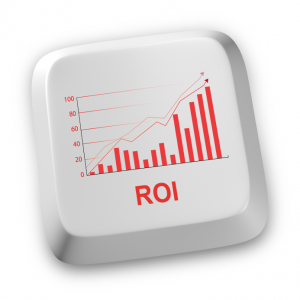Understand the role of a martech center of excellence in enhancing marketing efficiency across different business functions.

Establishing a martech center of excellence (COE) is essential for navigating modern marketing challenges. Think of it as the core of your marketing strategy, where all tools and processes support your business goals.
But how do you ensure your martech efforts are in lockstep with the goals of different organizational and go-to-market functions? The answer is in understanding the unique challenges and opportunities each function faces and positioning martech as a strategic enabler.
The role of a martech COE in driving strategic alignment
Every organization is different. Take a tech company focused on early adopters. It might use martech to disrupt the status quo and capture market share quickly. Compare that with a traditional industry player that uses martech to deepen customer relationships and create exceptional experiences. A one-size-fits-all approach to martech doesn’t work.
Creating a successful martech strategy involves combining a clear understanding of the market with the ability to adapt. Whether it’s targeting specific regions, industries or customer segments, martech’s role is to act as a bridge between business objectives and customer engagement.
Key go-to-market functions and their goals
Before exploring how martech can boost business goals, it’s important to understand an organization’s different go-to-market functions and their common objectives.
1. Demand generation
- Role: Drive awareness and interest through targeted campaigns.
- Sample goals:
- Increase lead generation by 25% each quarter.
- Improve the conversion rate of leads to opportunities by 15%.
- Boost engagement rates on key channels by 30%.
2. Field marketing
- Role: Tailor marketing strategies for specific geographies or customer segments, aligning sales and marketing efforts.
- Sample goals:
- Host 10 regional events to generate new sales opportunities.
- Increase regional sales pipeline by 20%.
- Achieve a 30% attendee-to-lead conversion rate at events.
3. Customer success
- Role: Ensure customers achieve their desired outcomes and maintain long-term loyalty.
- Sample goals:
- Achieve a 90% customer satisfaction score (CSAT).
- Increase retention rates by 15% year over year.
- Reduce churn by 10% through proactive engagement.
4. Sales and support
- Role: Streamline the customer acquisition process while providing exceptional post-sale support.
- Sample goals:
- Shorten the sales cycle by 20%.
- Achieve a 95% first-response rate within 2 hours for support queries.
- Increase cross-sell and upsell revenue by 25%.
5. User groups and events marketing
- Role: Foster community engagement through offline and online events.
- Sample goals:
- Grow user group membership by 40%.
- Increase online community engagement by 30%.
- Host five major user conferences, achieving 85% attendee satisfaction.
6. Partner marketing
- Role: Use partnerships to extend market reach.
- Sample goals:
- Launch three co-marketing campaigns, generating a 20% increase in leads.
- Expand partner-driven revenue by 30%.
- Increase partner engagement and training completion rates by 25%.
7. Product marketing
- Role: Define the positioning and messaging of products or services.
- Sample goals:
- Launch two new product positioning campaigns, increasing market share by 10%.
- Improve product adoption among new users by 20%.
- Enhance sales enablement materials, improving team performance by 15%.
How martech amplifies go-to-market functions
How can martech elevate each of these functions? Let’s explore how smart martech goals can directly support the broader objectives of each function.
Demand generation: Increasing lead quality with personalization
- Use analytics and segmentation tools to tailor campaigns based on customer behavior, improving lead quality and engagement.
- Use case: Implement predictive analytics to score leads and send personalized messages, resulting in higher-quality leads that convert faster.
Field marketing: Enhancing event follow-ups
- Integrate event management tools with CRM to streamline lead capture and post-event follow-ups.
- Use case: Use mobile event apps for real-time engagement, capturing feedback and integrating it with CRM for immediate action.
Customer success: Reducing churn with AI-driven insights
- Implement platforms that monitor customer usage and trigger interventions for at-risk accounts.
- Use case: Use AI to send personalized onboarding emails, reducing time to value and preventing customer churn.
Sales and support: Improving response times with automation
- Adopt sales enablement and customer support tools to streamline the acquisition process and speed up responses.
- Use case: Use AI chatbots to answer common support queries instantly, freeing up agents to handle more complex issues.
User groups and events marketing: Expanding reach with virtual platforms
- Use community management platforms to grow user engagement and extend event reach.
- Use case: Use online event platforms to host webinars and virtual conferences, increasing attendance and engagement.
Partner marketing: Simplifying collaboration with PRM systems
- Use partner relationship management (PRM) tools to track and enhance partner-driven revenue and engagement.
- Use case: Deploy co-marketing management tools to streamline collaboration and measure the effectiveness of joint campaigns.
Product marketing: Refining messaging with A/B testing
- Use content management systems (CMS) and A/B testing platforms to refine messaging across digital channels.
- Use case: Test different product messages on various platforms, ensuring they resonate with the target audience.
Building a martech roadmap for success
Aligning your martech COE with go-to-market strategies is not just about integrating technology — it’s about creating a cohesive, measurable framework that lets every department achieve its goals. By setting smart, achievable martech objectives, you can ensure your efforts contribute directly to the organization’s overall success.
The key is to recognize martech as a strategic partner, not just a tool. By understanding each function’s unique needs and aligning martech capabilities accordingly, your organization can unlock new levels of efficiency, engagement and growth. Now, it’s time to set the stage for your martech roadmap, laying out the tools and technologies to guide your journey toward marketing excellence.
The post How to align your martech COE with organizational and go-to-market goals appeared first on MarTech.
(4)
Report Post






